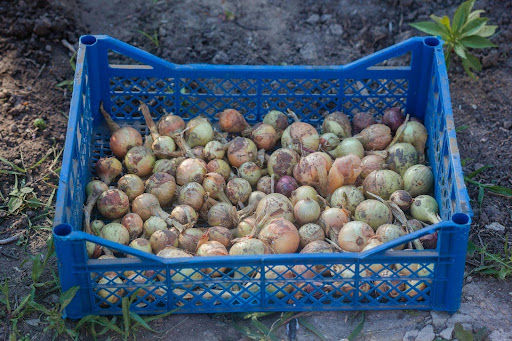Produce Spotlight: Cherries
- Breanna Hannula
- May 12
- 2 min read
Cherries are a very popular summertime fruit that can be enjoyed fresh, dried, or processed, yet raw cherries have not been directly implicated in any major foodborne illness outbreak. This may tempt growers to assume the fruit is inherently low risk, however this assumption can be dangerous.

Just because raw cherries have avoided an outbreak does not mean they are immune to contamination, nor does it justify a reduction in preventive efforts. It is critical that growers, harvest crews, and processors maintain and strengthen food safety practices to prevent contamination that have impacted other fresh product items.
There are several common vectors through which pathogens can be introduced into cherry production.
Equipment: Harvesting and processing equipment can serve as a breeding ground for bacteria. Contamination can be spread by any part of the machine that the raw cherries contact. A slimy buildup known as biofilm can harbor bacteria in hard-to-clean places such as cracks or rough welds.
Water: Water used for irrigation, cooling, or washing can become a source of contamination. The water itself can contain pathogens, or the water could spread pathogens from a single contaminated cherry to all the cherries floating in the tank. Water quality management is essential, and cooling and washing are considered post-harvest activities that requires 0 detectable generic E coli in 100mL of water.
Animals: Birds, rodents, and other wildlife that are present in cherry orchards can introduce fecal pathogens into the production environment. Growers should actively manage the risk posed by animals through fencing, deterrents, and regular field inspections, among other potential mitigation measures.
The risk of contamination continues during post-harvest handling. One real-world example underscores this point: a recall of processed, pitted cherries due to Listeria monocytogenes contamination. In this case, contamination was not traced back to the raw fruit in the field but rather introduced or amplified during processing. The recall served as a reminder that food safety controls must be applied at every stage of the supply chain—not just in the orchard.
It can be tempting for an industry with a strong food safety record to view rigorous practices as excessive or unnecessary. However, overconfidence and complacency can erode the very systems that have kept outbreaks at bay. Pathogens are opportunistic and invisible; they don’t wait for mistakes—they thrive on them. Proactive food safety measures such as regular training for workers, regular sanitation protocols, controlled water usage, and robust wildlife management plans are all essential.
Cherries may not have made headlines for foodborne outbreaks, but that is not a guarantee of future safety. The systems in place today are likely the reason for the fruit’s good track record, and relaxing those efforts could reverse that success. Cherry growers and processors must remain vigilant, proactive, and committed to maintaining the highest food safety standards across the board.
---
Article by Breanna Hannula, Produce Safety Technician


